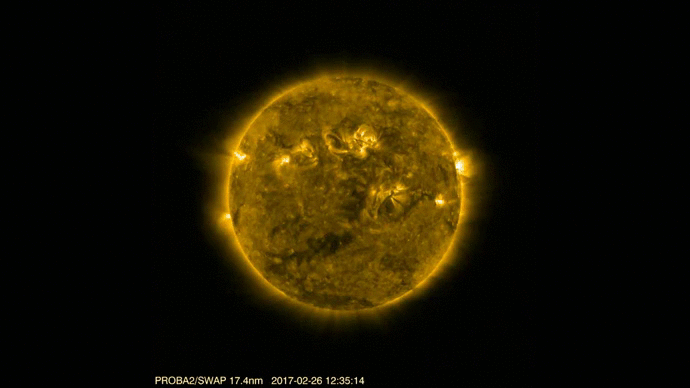A solar eclipse occurs when the Moon passes between the Sun and Earth, and the Moon covers (part of) the solar disk. When the Moon passes precisely the Sun-Earth line, it covers the entire solar disk and a total eclipse occurs. However, the Moon-Earth distance can vary considerably. Hence, sometimes the Moon is relatively far from the Earth. When that happens, its apparent size is not large enough to fully cover the Sun. Instead, we can see a ring of the Sun around the dark side of the Moon. This is called an annular eclipse.
On 26 February, lucky observers along the eclipse path in Chile, Argentina, Angola, Zambia and The Democratic Republic of the Congo have been able to witness such an annular eclipse. ESA's PROBA2 satellite, orbiting the Earth at an approximate height of 700 km, has also viewed this eclipse but as a partial one, due to its different vantage point. In fact, because the satellite only takes about 90 minutes to orbit the Earth, it passed through the Moon’s shadow several times during the event and so PROBA2 has not observed just one, but as many as 3 partial eclipses!
The full story is at the PROBA2 Science Centre website.






